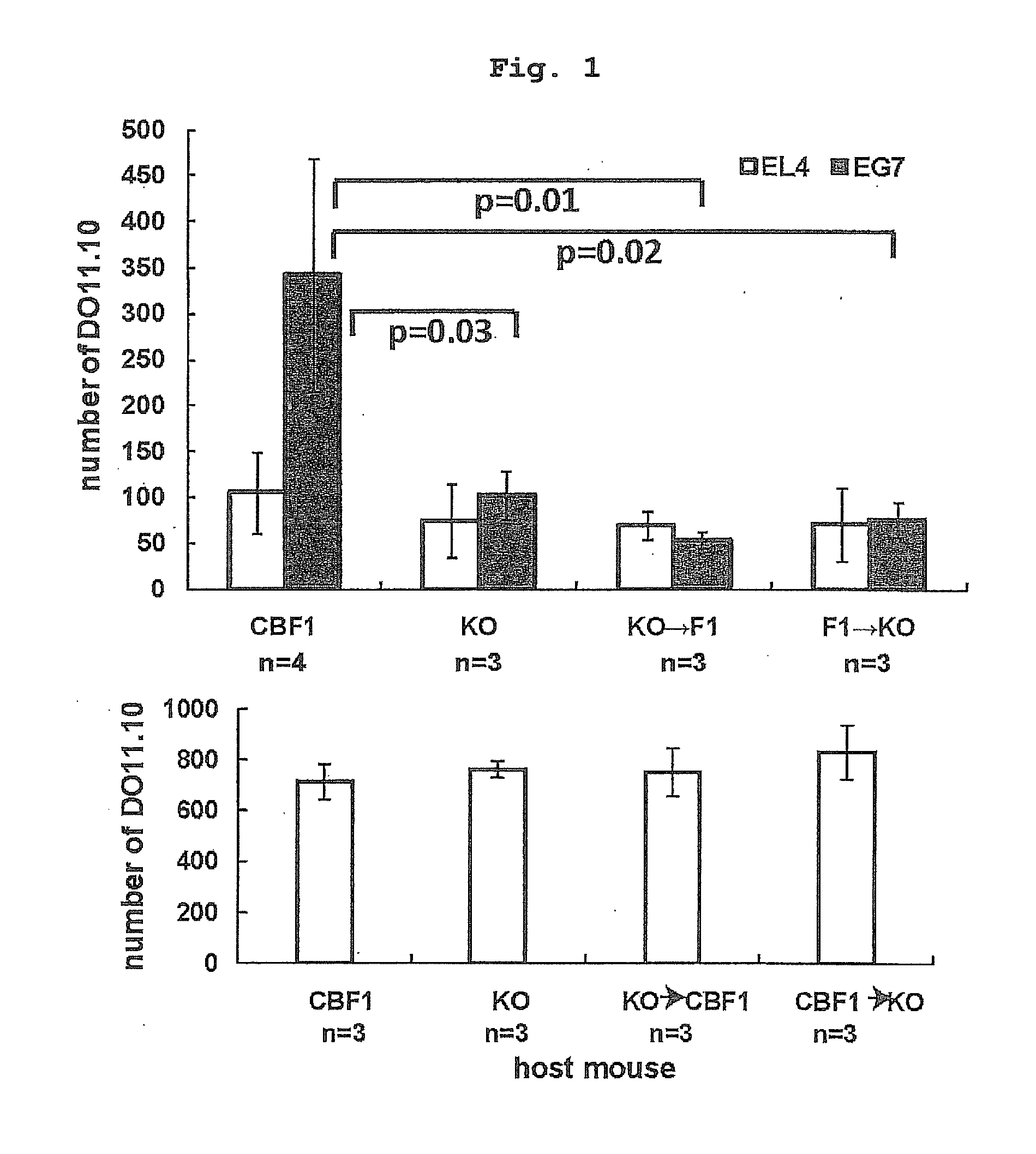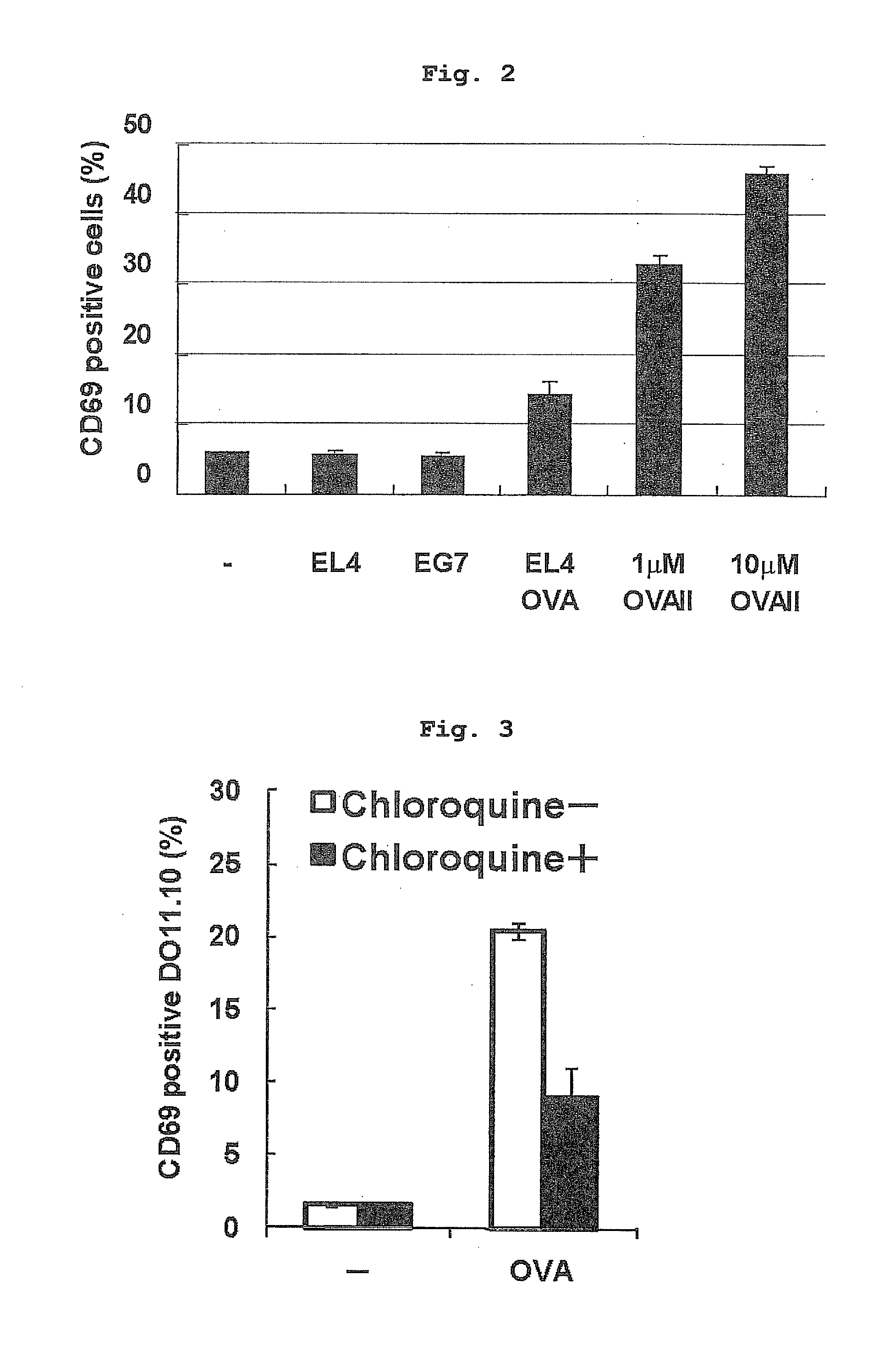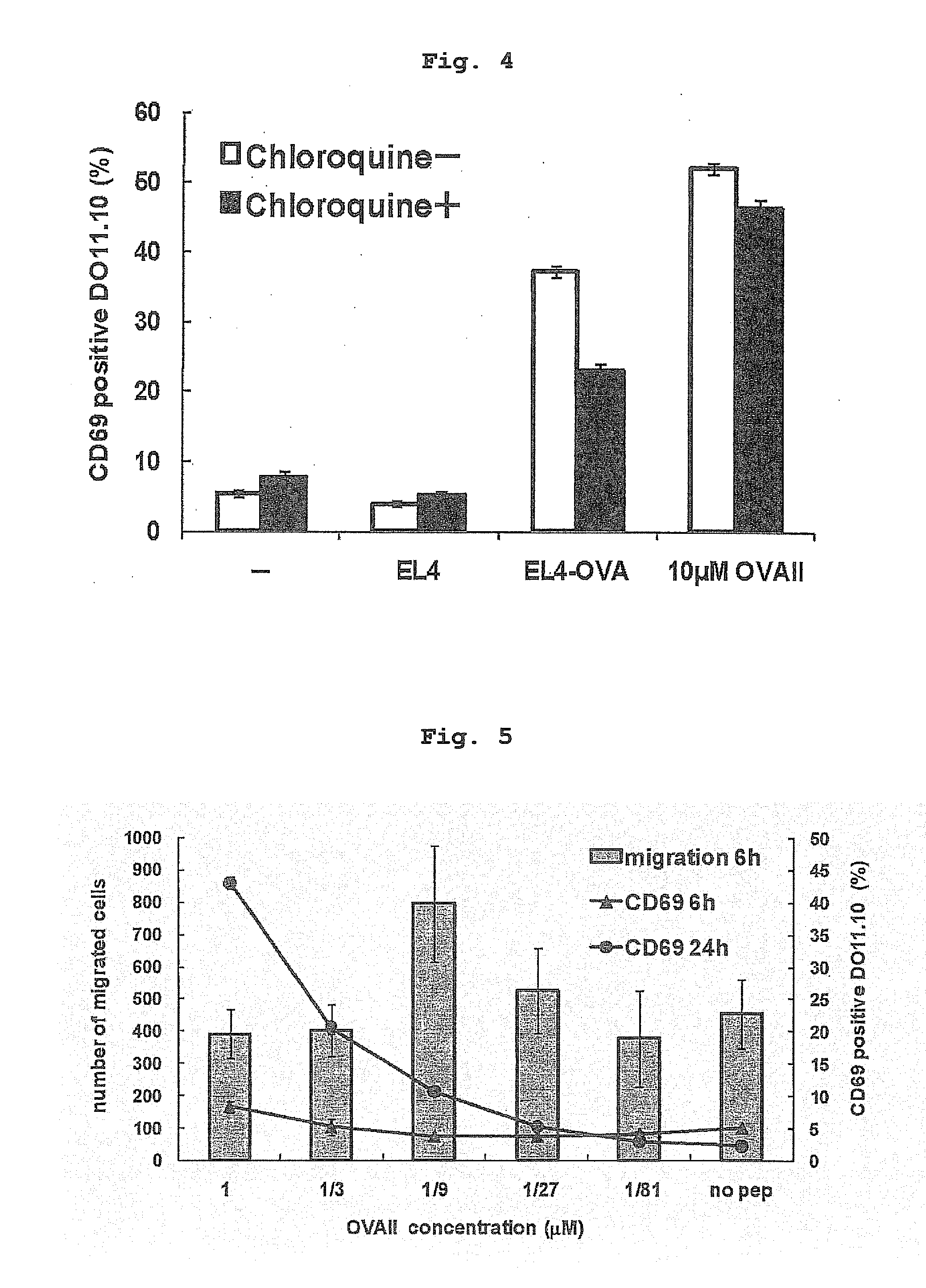Modification of helper t cell-inducing polypeptide
a technology of th cell and polypeptide, which is applied in the field of modification of the molecule of th cell inducing polypeptide and an antitumor agent, can solve the problems of inability to suppress the immune response to tumors, high probability of tsub>reg /sub>induced by an antigen, and inability to induce tumors, etc., and achieves the effect of facilitating induced
- Summary
- Abstract
- Description
- Claims
- Application Information
AI Technical Summary
Benefits of technology
Problems solved by technology
Method used
Image
Examples
example 1
Infiltration of Tumor-Specific Th Cell into Tumor Planted into Bone Marrow Chimeric Mouse
[0181]1.5% Oxytetracycline (DENKASEIKEN) was added to the drinking water of CBF1 mouse after 10 Gy gamma-irradiation, I-AβbKO mouse after 9.5 Gy gamma-irradiation, or bone marrow chimeric mouse (bone marrow chimeric mouse obtained by transplanting I-Aβb KO bone marrow to CBF1 mouse, bone marrow chimeric mouse obtained by transplanting CBF1 mouse bone marrow to I-Aβb KO mouse) from one day before 1.5×107 bone marrow transplantation to 14 days after the transplantation. The Th transfer experiment was performed at least 28 days after the bone marrow transplantation. Complete replacement with the donor-derived bone-marrow-derived cells was confirmed by staining peripheral blood mononuclear cells with anti-Ld mAb (30-5-7S), anti-Kb mAb (Y3), anti-I-Ad mAb (39-10-8) and anti-I-Ab mAb (25.9-3). PKH-labeled DO11.10 (2×107) was transferred on day 6 from the intradermal (left and right) transplantation of...
example 2
Verification of Antigen Presentation by Vascular Endothelial Cell
[0182]The inventor verified whether vascular endothelial cells (EC) incorporating apoptotic tumor cells can decompose the cytoplasm antigen in the tumor cells, bind polypeptide, which is a degradation product, to an MHC class II molecule, and present the polypeptide. The level of antigen presentation by the F2-IAd cells was examined by monitoring the expression of CD69, which is an early activation marker on reactive DO11.10 cells. As shown in FIG. 2, the endothelial cells pulsed with OVAII peptide could stimulate DO11.10 cells. When F2-IAd cells were incubated with opsonized EL4 or EG7, about 30% of the cells incorporated apoptosis tumor cells. However, opsonized EG7 did not induce expression of CD69 in DO11.10 cells even when tried several times. It is considered that this is partly because of the possibility of low concentration of OVA protein in the EG7 cells. F2-IAd cells pulsed with 0.1 μM OVAII induced expressio...
example 3
Influence of Inhibition of Antigen Presentation by Extrinsic Pathway of Endothelial Cell on Antigen Presentation
[0183]Since a tumor antigen possessed by the incorporated tumor cells is presented by MHC class II molecules, antigen processing via extrinsic pathway was assumed. Therefore, the inventor verified whether antigen presentation is sensitive to chloroquine which is an inhibitor of antigen presentation via endosome. As shown in FIGS. 3 and 4, when F2-IAd cells were treated with chloroquine, presentation of OVA protein known to be also presented in extrinsic pathway decreased. Antigen presentation of the OVA-loaded EL4 was also sensitive to chloroquine. Therefore, antigen presentation of OVA protein present in the EL4 cells by F2-IAd was suggested to be mainly via the extrinsic pathway.
PUM
 Login to View More
Login to View More Abstract
Description
Claims
Application Information
 Login to View More
Login to View More - R&D
- Intellectual Property
- Life Sciences
- Materials
- Tech Scout
- Unparalleled Data Quality
- Higher Quality Content
- 60% Fewer Hallucinations
Browse by: Latest US Patents, China's latest patents, Technical Efficacy Thesaurus, Application Domain, Technology Topic, Popular Technical Reports.
© 2025 PatSnap. All rights reserved.Legal|Privacy policy|Modern Slavery Act Transparency Statement|Sitemap|About US| Contact US: help@patsnap.com



